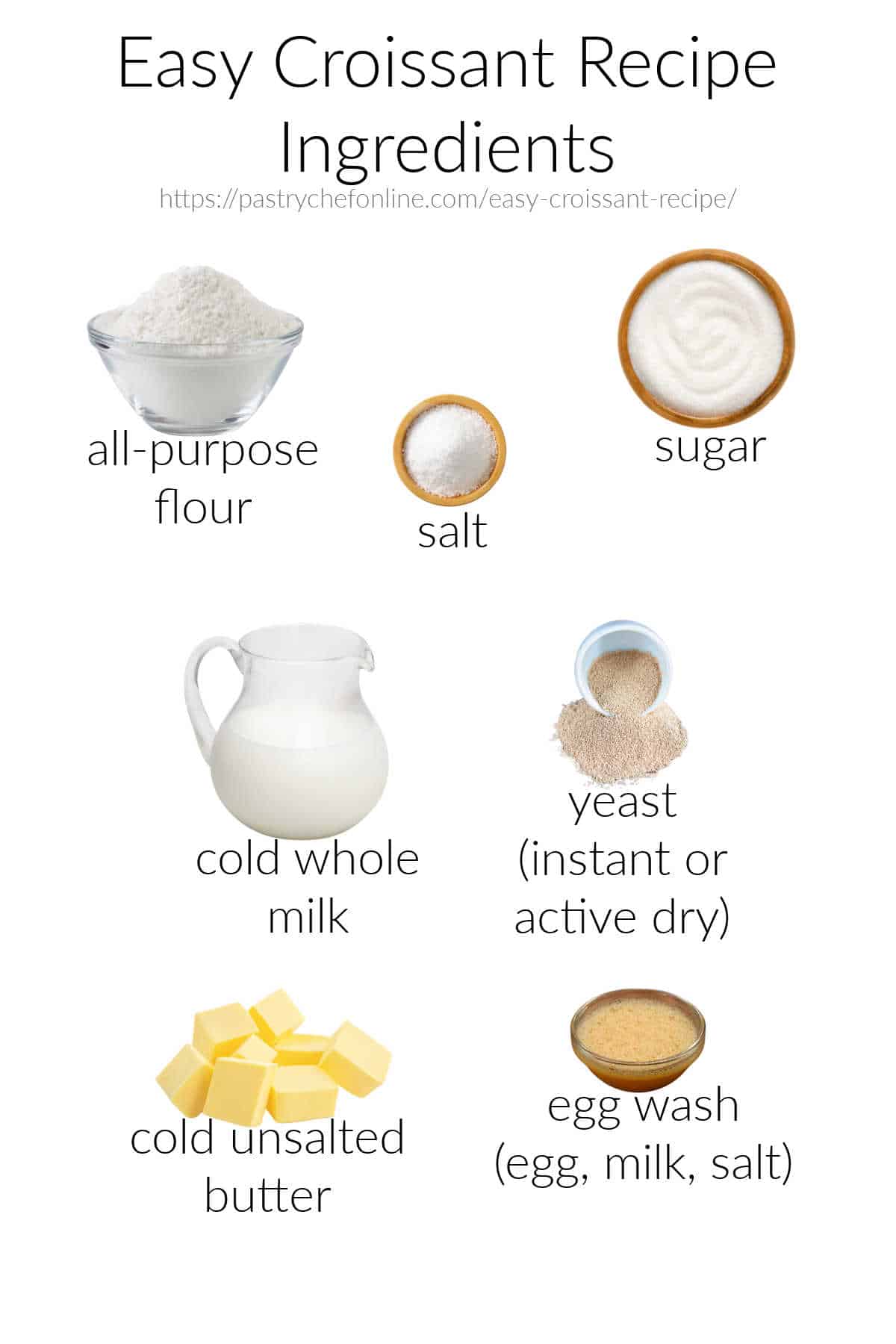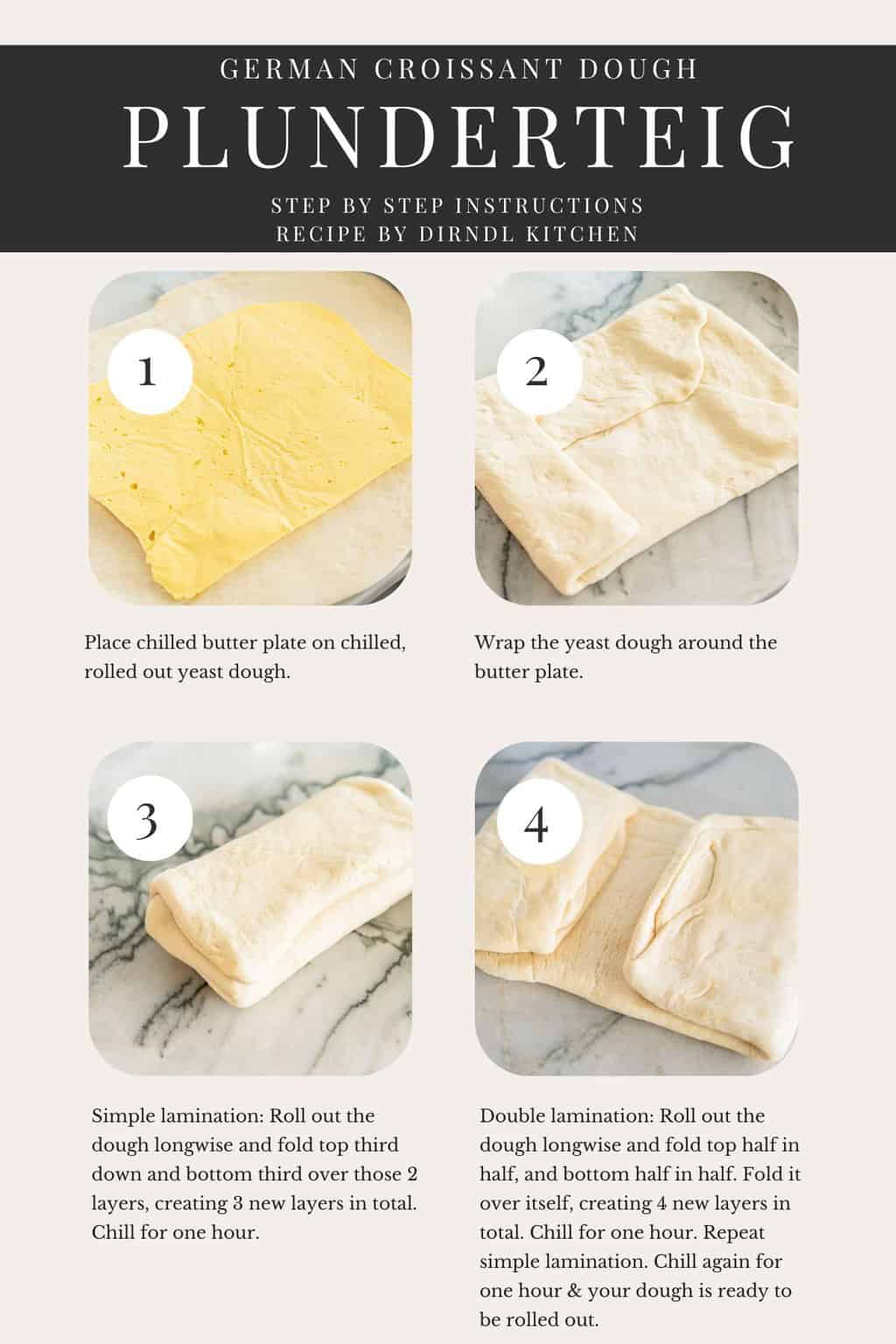Introduction
Croissants begin their journey as flaky, buttery marvels—and this Croissants recipe captures that magic with every layer. If you’ve ever walked into a bakery and been drawn in by the golden‑brown crescents and airy texture, you’ll know that homemade croissants are worth the effort. Let’s roll up our sleeves and create a batch of these classic breakfast pastries together.
Why You’ll Love These Croissants
There’s something deeply satisfying about pulling apart a warm croissant: delicate crisp outer layers, soft interior, rich butter flavour—and the visual delight of its laminated layers. The process of lamination—that is, rolling and folding butter into dough to create multiple layers—is the very reason we get those airy, flaky textures. Sally’s Baking+1
Plus, making croissants at home means you can tailor to your tastes—maybe a slightly larger size, extra buttery flavour, or a twist with filling.
Ingredients
For the dough
-
500 g (about 4 cups) all‑purpose flour, plus extra for dusting BRIGHT MOMENT CO.+1
-
50 g (¼ cup) granulated sugar
-
10 g (2 tsp) fine sea salt BRIGHT MOMENT CO.+1
-
10 g (≈2¼ tsp) active dry yeast or instant yeast Natasha’s Baking
-
300 ml (≈1½ cups) cool milk (or mixture of milk and water) BRIGHT MOMENT CO.+1
-
30 g (2 Tbsp) unsalted butter, softened (to add richness)
-
1 large egg (for dough or for egg wash)
For the butter block (lamination)
-
250 g (approx. 1 cup + 2 Tbsp) cold unsalted butter, cut into pieces and shaped into a rectangle
For finishing
-
1 egg, beaten with 1 Tbsp water (egg wash)
-
Optional: coarse sugar or flake salt for sprinkling
Instructions
Prepare the dough and butter block
-
In a mixing bowl, combine flour, sugar, salt, and yeast (keeping salt and yeast separate until mixing to avoid inhibiting yeast).
-
Add the cool milk (and water if using) plus softened butter and mix until a rough dough forms. Knead briefly (or use stand mixer) until smooth and elastic. Baran Bakery+1
-
Shape dough into a rectangle, wrap in plastic, chill in fridge ~30–60 minutes. Meanwhile, shape the cold butter pieces into a flat rectangle (≈ 8″ × 10″ or similar) and chill until firm.
-
On a lightly floured surface, roll the dough into a rectangle large enough to envelop the butter block. Place the butter block in the centre and fold the dough over to fully encase it. Sally’s Baking+1
Laminate and fold the dough
-
Roll the dough (with butter inside) to a long rectangle (for example ~20″ × 10″) with the shorter side facing you. Fold into thirds (like a business letter). Chill for 20–30 minutes. Sally’s Baking+1
-
Repeat the roll and fold process two more times (total 3 turns), chilling between each to keep butter cold and dough manageable. This creates those many layers.
-
After final fold and chill, roll the dough to about ¼″ thickness and cut into triangles (for classic crescent shape).
Shape, proof and bake the croissants
-
Take each triangle, starting at the wide base, roll toward the pointed tip to form a crescent shape; place on a baking sheet lined with parchment.
-
Cover lightly and proof (rise) in a warm-ish spot until the croissants are noticeably puffy (about double in volume). Some recipes take several hours or even overnight in fridge. The Flavor Bender+1
-
Preheat oven to ~200 °C (400 °F). Brush the croissants with egg wash, making sure not to deflate them.
-
Bake in preheated oven for about 15 minutes, then reduce heat to ~180 °C (350 °F) and bake another 8‑12 minutes until deeply golden and cooked through. Let cool slightly before serving.
Tips for Success
-
Keep everything cold (dough, butter, surface) during lamination — if the butter melts into the dough, the layers won’t form properly. Sally’s Baking+1
-
Use firm, even pressure when rolling; rotate the rectangle between rolls so the layers remain uniform.
-
Let the croissants proof fully before baking — under‑proofed will give less lift, over‑proofed may collapse.
-
If the crust edges brown too fast but centre looks under‑done, tent with foil.
-
Weigh ingredients if possible for more consistent results — pastry is precise work.
Variations of Croissants
Classic buttery croissants
Follow the recipe above exactly for that pure, flaky, buttery experience.
Chocolate‑filled (pain au chocolat)
Instead of plain triangles, place a strip of dark chocolate at the base of each triangle before rolling and proceed normally. The same laminated dough works. The Flavor Bender
Almond croissants
After baking plain croissants, slice them open and fill with almond cream (frangipane), sprinkle with sliced almonds and powdered sugar.
Savoury croissants
Roll dough slightly thicker and incorporate ham & cheese or spinach & feta for a savoury twist.
Ingredient Substitutions
-
For a richer dough, replace some milk with cream (e.g., ¼ cup cream + 1 ¼ cup milk).
-
For whole wheat variation: replace up to 25% flour with whole‑wheat flour, but expect slightly denser result.
-
If you don’t have unsalted butter, use salted butter but reduce salt in dough by ~¼ tsp.
-
For dairy‑free: Use a vegan buttery block with high solid fat content for the lamination and plant‑milk instead of cow’s milk (results may differ slightly).
Storage & Reheating
-
Freshly baked croissants are best eaten the same day for ultimate crispness.
-
To store: let cool completely, wrap in foil or plastic, store at room temperature for up to 1 day. After that the crust loses crispness.
-
To re‑crisp: Preheat oven to 175 °C (350 °F) and warm croissants for ~5 minutes. This revives the layers and texture.
-
You can also freeze baked croissants: wrap tightly and freeze. Thaw at room temperature and warm in oven before serving. Southern Living
What to Serve With Croissants
-
A classic pairing: freshly brewed coffee or café au lait complements buttery croissants beautifully.
-
Serve with high‑quality jam (like raspberry or apricot) and slightly softened butter for a simple, indulgent breakfast.
-
For a brunch twist: slice croissants and layer with ham/cheese and bake into mini croissant sandwiches.
-
Fresh fruit (berries or sliced melon) brightens the richness and makes it feel balanced.
Nutrition Facts
(Approximate per plain buttery croissant, yields ~12 pieces)
-
Calories: ~260‑300 kcal
-
Fat: ~14‑16 g (saturated ~8‑10 g)
-
Carbohydrates: ~28‑32 g (sugars ~4‑6 g)
-
Protein: ~5 g
-
Sodium: ~200‑250 mg
Note: Values vary depending on size, butter content, and any fillings added.
FAQs
Q: Why did my croissants have layers but no height?
A: Likely the butter was too soft or the dough too warm during lamination, causing the layers to merge rather than puff. Keeping everything chilled is key.
Q: Can I make the dough ahead of time?
A: Yes. You can prepare the dough and butter block one day, do laminate and fold, then refrigerate overnight before final shaping and baking. The Flavor Bender
Q: My croissants browned quickly but still seemed doughy inside—what went wrong?
A: Either the oven was too hot, the croissants were over‑proofed causing collapse, or they were too large and needed more bake time. Try lowering initial temperature or extending bake time shorter pieces.
Q: Can I freeze the raw shaped croissants?
A: Yes—after shaping the croissants but before proofing, you can freeze them on a tray until firm, then store tightly. When you’re ready to bake, thaw and allow to proof before baking. Southern Living
Related Recipes
Conclusion
Homemade croissants may take time and a bit of patience—but the reward is unmistakable. With crisp outer layers, tender buttery interior and that irresistible aroma filling your kitchen, these pastries transform ordinary mornings into something special. Gather your ingredients, chill the dough, laminate carefully—and enjoy the result of your effort. You deserve every buttery bite of these croissants.










